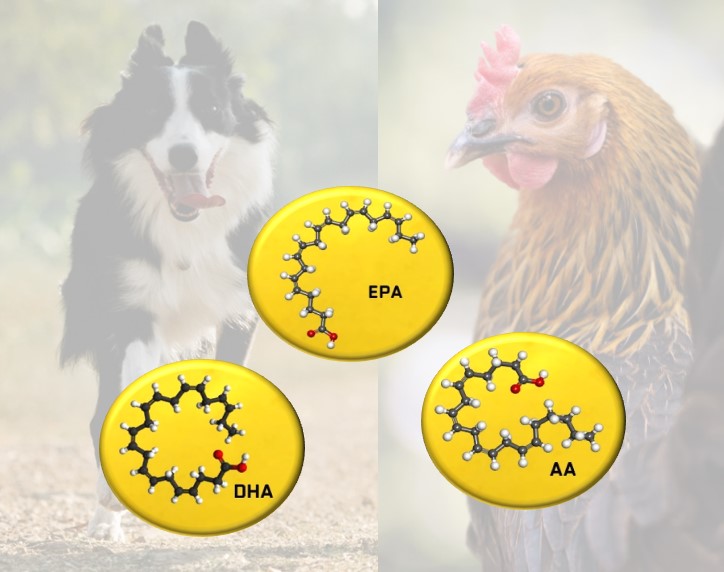Dietary Omega-3 and Omega-6 fatty acids in the animal nutrition

Dear colleagues,
This week we have chosen a topic that is a few years old but still a hot topic, we are referring to Omega 3 ( ω3 ) and Omega 6 ( ω6 ) fatty acids.
Omega 3 and 6 Fatty Acids are long chain Polyunsaturated Fatty Acids, with several key functions in important metabolic reactions.
If the first double bond is at carbon 3 they are ω3 and if at carbon 6 they are ω6.
Linoleic acid (18:2, n-6) and linolenic acid (18:2, n-3), have the shortest chains of the ω fatty acids and are classified as essential fatty acids since animals cannot produce them.
Some vegetable ingredients are rich in short chain ω3 and ω6 fatty acids, but they need to be lengthened to achieve their full metabolic properties.
Some animal fat sources are rich in very long-chain ω6 fatty acids, such as arachidonic acid, and dietary marine oil sources are usually rich in very long-chain ω3 fatty acids, such as eicopentaenoic and docohexaenoic acids, EPA and DHA.
A low level of ω3 in the diet is related to inflammatory processes, especially when there is a high level of ω6, the reason must be sought in the elongation metabolism of these molecules since arachidonic acid ( AA ), which is a long chain fatty acid essential for immune system functions, is transformed by cyclooxygenase ( COX ) and lipoxygenase ( LOX ) enzymes into strong proinflammatory ω6 prostanoids and leukotrienes, but ω3 eicosapentaenoic acid ( EPA ), is also processed by COX and LOX so it competes with AA and regulates the excessive level of proinflammatory molecules. Another long chain ω3 fatty acid, docosahexaenoic acid (DHA), inhibits the production of proinflammatory prostanoids.
Finally, several studies in different species show that a good balance of ω3 fatty acids helps to maintain the health of the heart, joints, skin, kidneys and immune system, as well as growth and reproduction, so it is not surprising that they are increasingly used in diets for petfood, layers, breeders or young animals.
Below we are pleased to include an interesting article with a very useful review on the effects and metabolism of Omega 3 and 6 fatty acids in dog and cat diets.
Enjoy the article.


 ES
CERRAR X
ES
CERRAR X